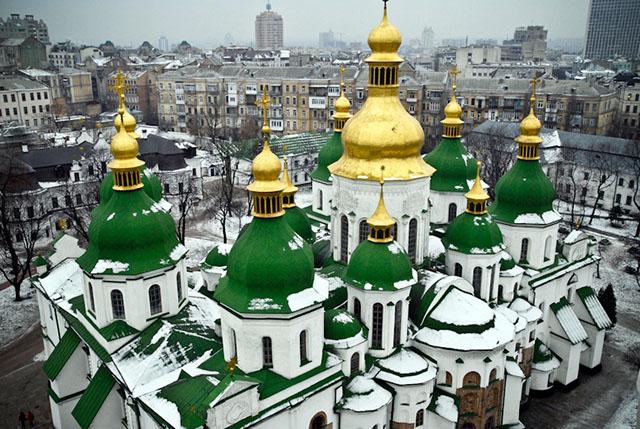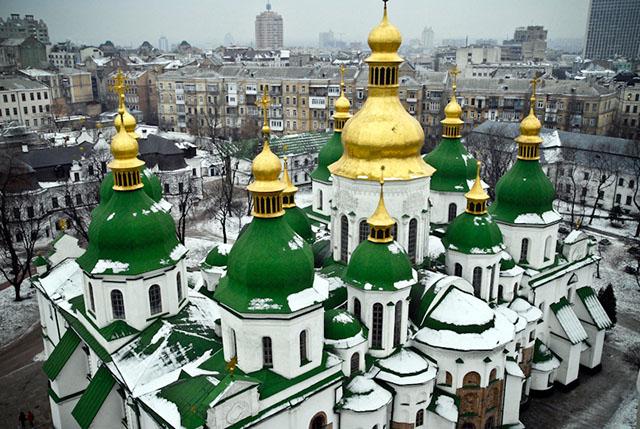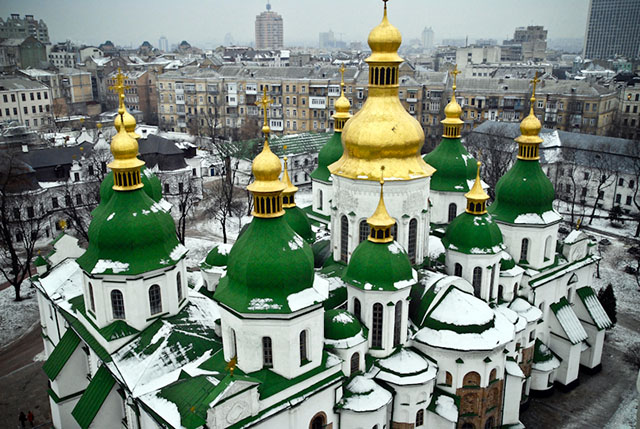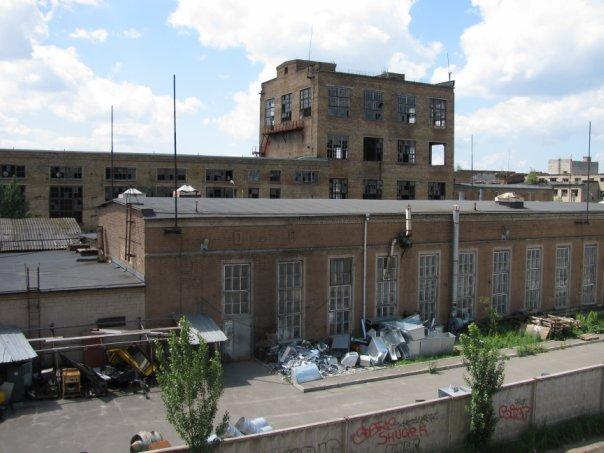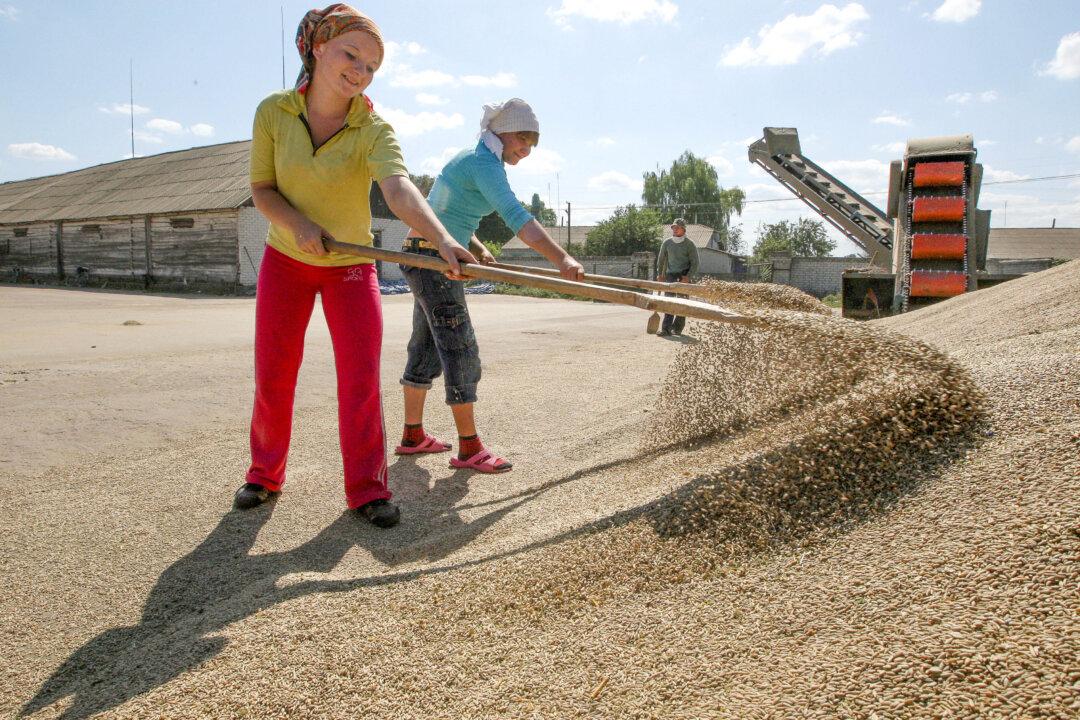KYIV, Ukraine—The historic center of Kyiv—a city founded on the banks of the Dnieper River nearly 1,500 years ago—is home to many beautiful and important heritage buildings. But in recent years, the ancient architecture in Ukraine’s capital has been under growing threat as developers erect glass skyscrapers next to old structures, inviting traffic jams and destroying the aesthetics.
This development carries an even greater threat, however. Many old buildings have started to collapse because their old foundations cannot support the load from the adjacent contemporary structures.
One building in dire danger of collapsing is the 1,000-year-old Saint Sophia Cathedral—one of Europe’s most important religious landmarks.
Inside the protected area of the open-air museum known as the Sophia of Kyiv, it is forbidden under Ukrainian law to erect new buildings. The historical monument also was inscribed as a UNESCO World Heritage site in 1990.
Despite the restrictions, a 10-story elite housing estate is being built next to the magnificent cathedral.
Michael Dehtyaryov, member of National Union of Artists of Ukraine and the New York Academy of Sciences, has spent most of his life defending the architectural monuments of Kyiv. He says this construction not only disrupts the esthetics of the cathedral, it also jeopardizes its physical condition.
“The most important is hydrogeology,” says Dehtyaryov.
“The circulation of underground water has not changed here for centuries. But if you build here a house with pile foundation [long piles buried deep in earth], then this circulation is disrupted, and the underground water level rises.”
He adds the foundation of St. Sophia has already started to collapse. Many cracks have appeared on the cathedral’s walls, and a famous mosaic of Mother of God Oranta has become wet.
